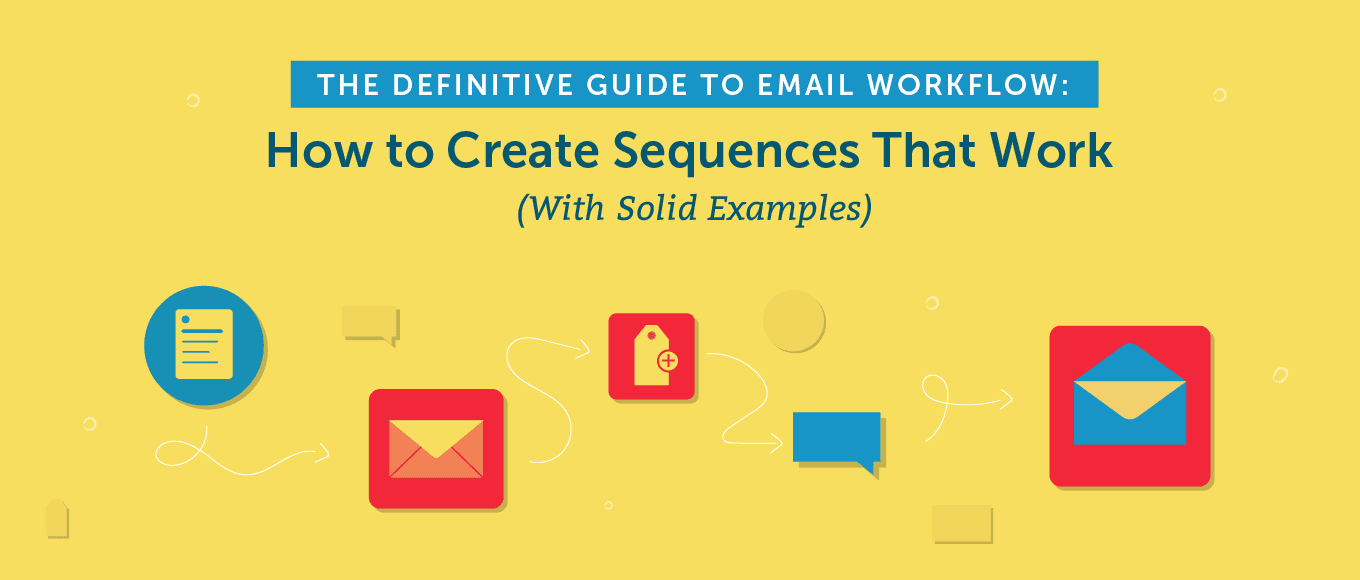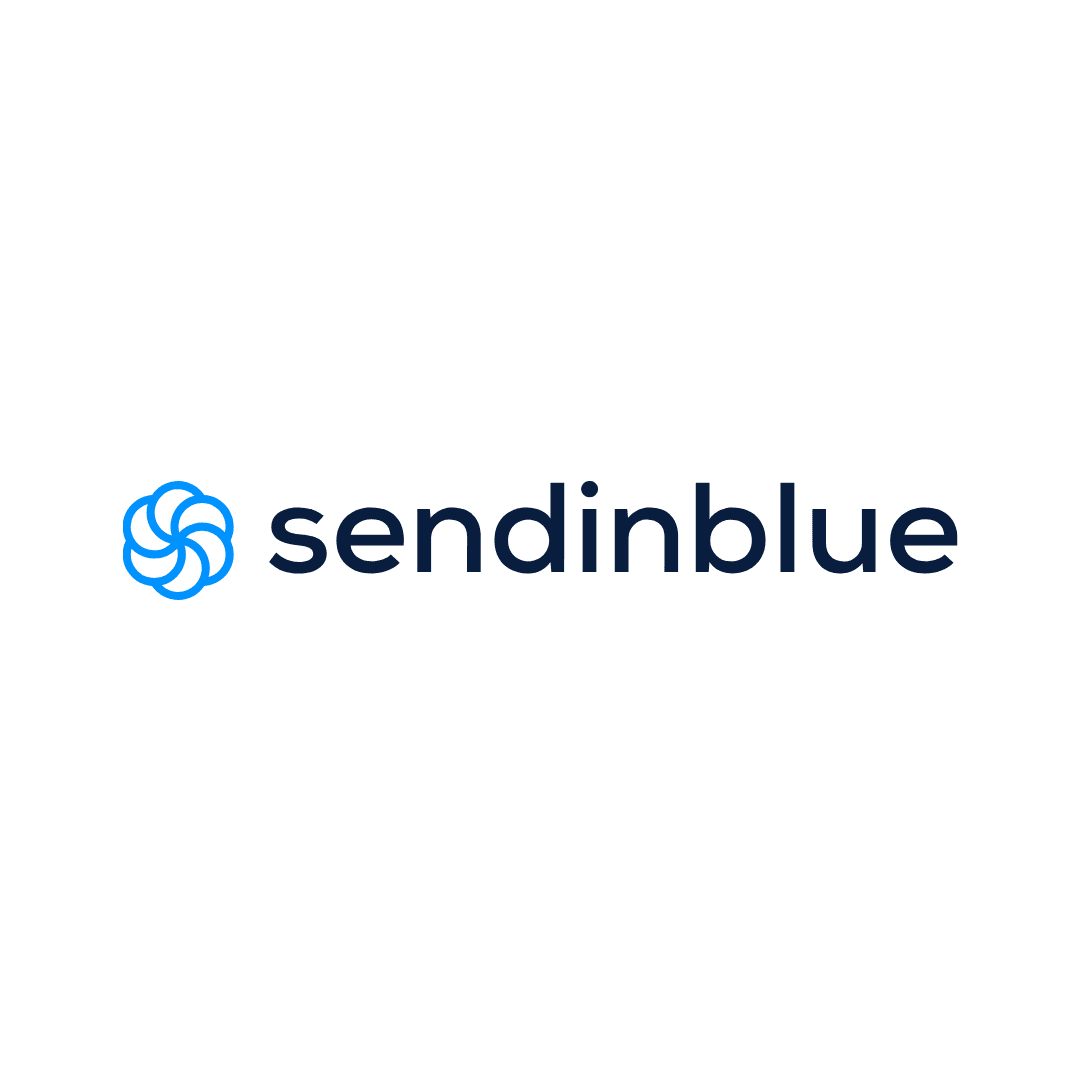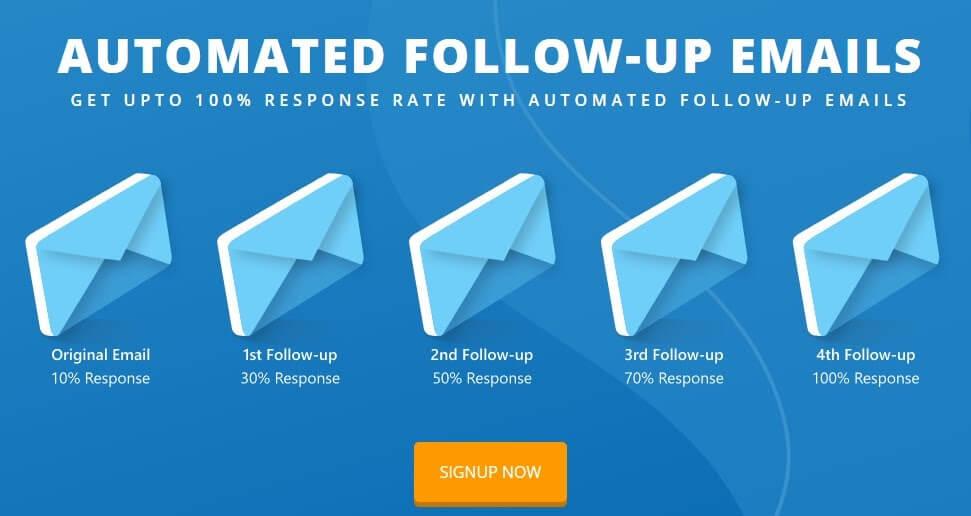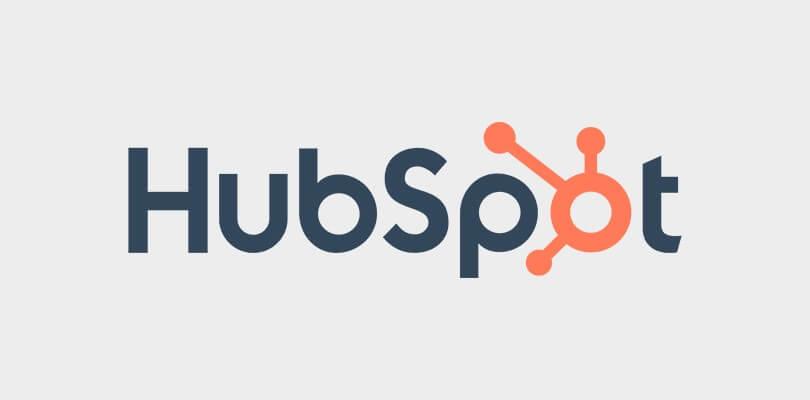The Definitive Guide To Email Workflow: How to Create Sequences That Work (With Solid Examples)
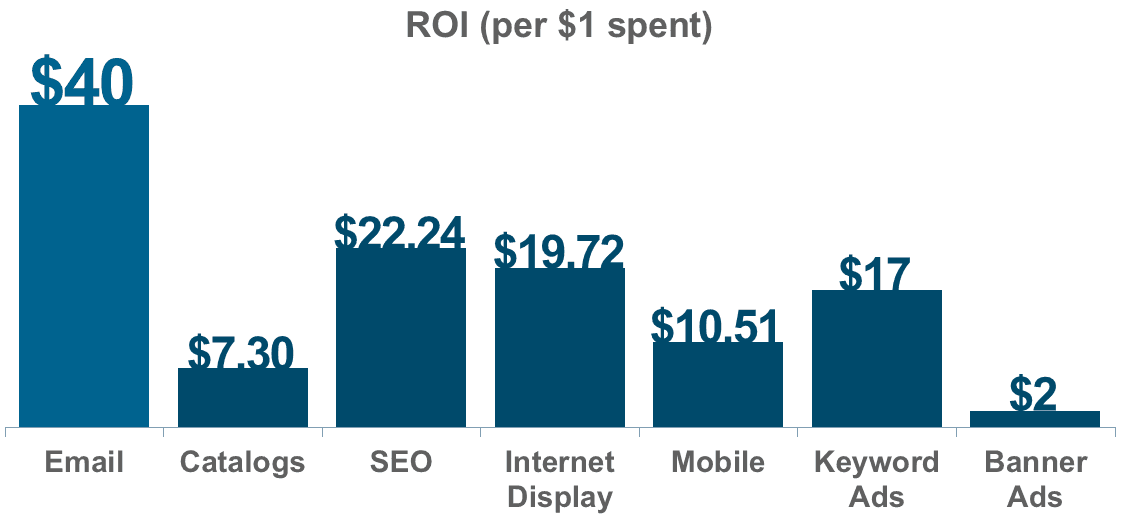 That makes sense — when you know how unfairly powerful automated email sequences can be.
See, automation is important for all businesses, and automating your email marketing is such a great way to:
That makes sense — when you know how unfairly powerful automated email sequences can be.
See, automation is important for all businesses, and automating your email marketing is such a great way to:
- Help your customers go through each step of the buyer’s journey. Converting cold leads into brand advocators just with email.
- Build a strong audience your business can rely on (see how Brian Dean, from Backlinko, associates his success with growing his list).
- Invest less time in the middle of your funnel and focus on the important aspects of your business.
- Generate sales automatically.
The definitive guide to email workflow: how to create sequences that work
Click To TweetFirst, Get Your Email Marketing Calendar
If you're not planning your emails on a calendar right now, get started with this downloadable template:What is an Email Sequence and Why Do You Need It?
An email sequence is a series of emails. These are sent to your list in a regular period of time (daily, weekly, etc.) with the purpose of generating a sale, educate your prospects, onboard new customers, or simply get some feedback from your subscribers. They’re commonly triggered after you sign up, place an order, abandon your cart, or cancel your subscription, so they don’t require you to send them manually. Basically, they run your email marketing automatically. Here’s how Sonia Simone, from CopyBlogger, argues about why autoresponders are the lazy marketer’s best friend: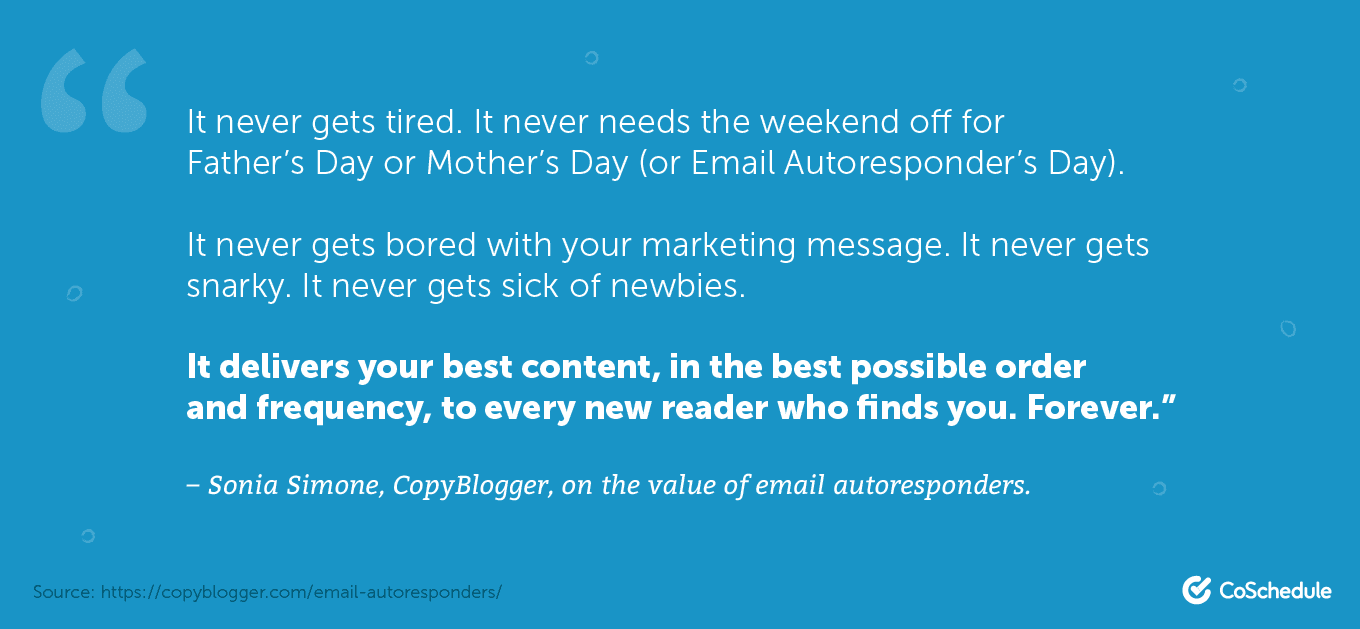 Imagine you’d have to stay tuned for every cart abandonment or new subscriber notification in order to send emails.
That would be as time-consuming as peeling a potato with your nails!
If making money while you sleep and getting 4,000% ROI isn’t enough for you, consider that — as of 2019 — more than 3.9 billion persons are using email.
Imagine you’d have to stay tuned for every cart abandonment or new subscriber notification in order to send emails.
That would be as time-consuming as peeling a potato with your nails!
If making money while you sleep and getting 4,000% ROI isn’t enough for you, consider that — as of 2019 — more than 3.9 billion persons are using email.
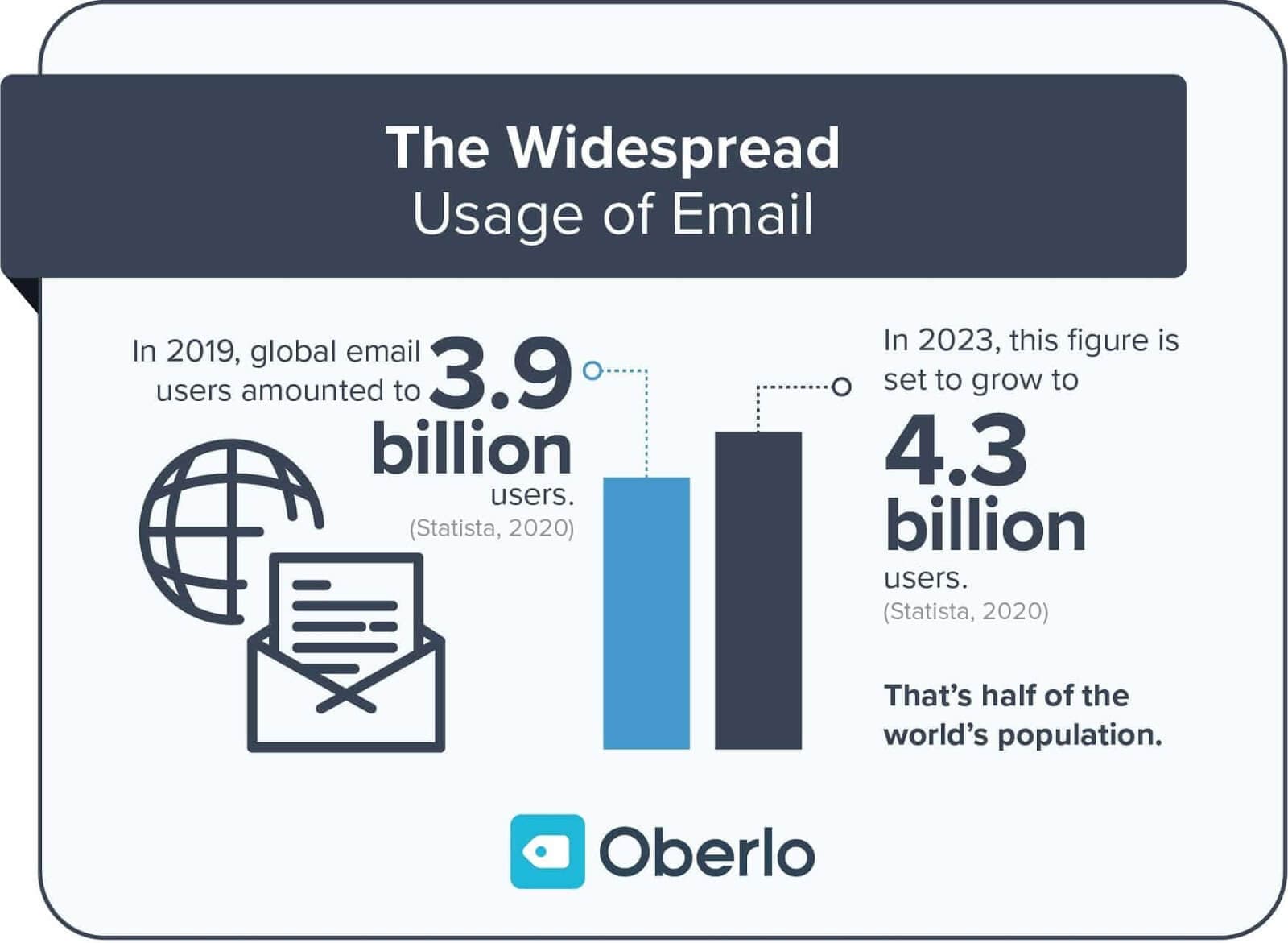 This means most businesses around the world are doing their best to leverage email marketing to top-levels — including your competition.
You need to stay ahead.
To get started, you need to know how each email trigger is related to a specific stage of the sales funnel.
This way, so your emails can properly talk to your prospects, consider their current place in the funnel.
That’s exactly what we are going to tackle next.
This means most businesses around the world are doing their best to leverage email marketing to top-levels — including your competition.
You need to stay ahead.
To get started, you need to know how each email trigger is related to a specific stage of the sales funnel.
This way, so your emails can properly talk to your prospects, consider their current place in the funnel.
That’s exactly what we are going to tackle next.
How to Setup Your Own Email Robot
First, you need an email marketing automation software. We’ll talk about that later. You’ll find lots of options to automize your email series — from simple drip campaigns to behavioral email workflows. Thankfully, you can follow these four, simple steps to avoid that overwhelming feeling and set up an email autoresponder.Step 1: Pull the Trigger
The first step is to select the action that will trigger the autoresponders. This trigger can be:- A new tag
- A new subscriber
- A click on your link or website
- A form submission
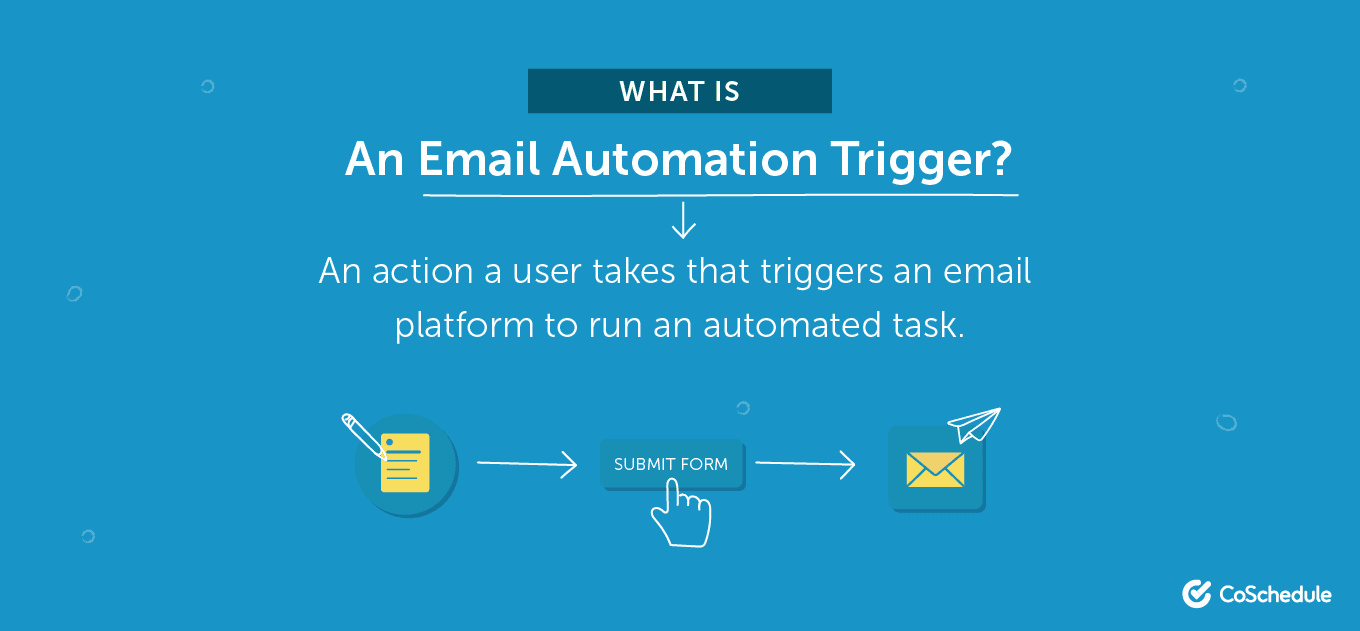 Example: A new subscriber joins your email list and then receives a series of emails welcoming them to your list.
To start doing this, click on “create a workflow” in your software. Choose a template — if you have one — and set the primary trigger of the sequence.
The options may look like this:
Example: A new subscriber joins your email list and then receives a series of emails welcoming them to your list.
To start doing this, click on “create a workflow” in your software. Choose a template — if you have one — and set the primary trigger of the sequence.
The options may look like this:
 Normally, this is a simple drag-and-drop process and pretty straight-forward.
It’s also the most fundamental step, so you send the most appropriate emails in the most appropriate moments.
Normally, this is a simple drag-and-drop process and pretty straight-forward.
It’s also the most fundamental step, so you send the most appropriate emails in the most appropriate moments.
Step 2: Insert Your Email (Basic)
Once you’ve selected the trigger, now it’s time to insert emails. If you already have a template, you’re welcome to use it. If not, you can create some email templates.
You’ll be directly asked to do this. However, you’ll also be asked to set the delay. The delay option lets you set the time the software should wait to send the email.
For example, if it has to wait until 9 a.m. in your subscriber’s time zone, or simply one day after the condition is met.
If you already have a template, you’re welcome to use it. If not, you can create some email templates.
You’ll be directly asked to do this. However, you’ll also be asked to set the delay. The delay option lets you set the time the software should wait to send the email.
For example, if it has to wait until 9 a.m. in your subscriber’s time zone, or simply one day after the condition is met.
 If you don’t know how to approach this. Check these 14 studies that show you the best times to send emails.
Another study by Eachnight even showed that 60% of shoppers made an online purchase between the hours of midnight and 4 a.m. To wrap up their late evenings, some folks turn to their phones and computers to place an order.
Meanwhile, 43% did so during the first hour after they woke up. Perhaps, it may be worth considering these times in order to capture buyers when they’re more likely to convert.
Normally, for simple autoresponders, you want the first email to be delivered instantly — just after the user has met the condition.
If you don’t know how to approach this. Check these 14 studies that show you the best times to send emails.
Another study by Eachnight even showed that 60% of shoppers made an online purchase between the hours of midnight and 4 a.m. To wrap up their late evenings, some folks turn to their phones and computers to place an order.
Meanwhile, 43% did so during the first hour after they woke up. Perhaps, it may be worth considering these times in order to capture buyers when they’re more likely to convert.
Normally, for simple autoresponders, you want the first email to be delivered instantly — just after the user has met the condition.
Normally, for simple autoresponders, you want the first email to be delivered instantly — just after the user has met the condition.
Click To Tweet Easy, huh?
Easy, huh?
Step 3: Add the Sequence (Normal)
A drip sequence is a common series of emails you often get after signing up, like 7-day courses, nurture emails, etc. They only follow the trigger condition, and after that, the email sequence gets sent without interruptions. For example, let’s say you signed up for a “15 Email Marketing Secrets” PDF. After you’ve received your lead magnet, you’ll probably receive an introductory email the next day. The day after that, another email about “how to incorporate these secrets in your business,” and so on. Make sure that the sequence has a purpose, and that the last email calls the reader to take the desired action. It doesn’t have to be a sale — a reply works, too.
Make sure that the sequence has a purpose, and that the last email calls the reader to take the desired action. It doesn’t have to be a sale — a reply works, too.
Step 4. Set a Behavioral Workflow (Complex)
Now, here comes the fun part. When you’re implementing many sequences on many stages of the funnels, you need to be cautious. You don’t want your paying customers to receive the same emails as if they were brand new on your list, and you shouldn't send more than one sequence to the same prospect simultaneously. That’s damaging. This is when behavioral workflows come to your rescue. It turns out, you can actually program your emails according to several conditions. To illustrate, let’s say you’ve generated 100 leads in a week with a Special Report as lead magnet, and you want to add more value to that report by including a 5-day email sequence that prompts you to take proper action, and eventually, buy your product. Well, at least one of those new leads didn’t click-to-download the report. Of course, he or she won’t find any value on your sequence without reading the report. Building a workflow that reminds those leads to download the report will help you fill the gap and even increase the engagement from those new subscribers. In order to do this, find those gaps, and make use of conditional triggers (“if/else,” “delay,” and so on) to smooth your user experience. It should look similar to this: Of course, most automation softwares bring far more options than this. The possibilities are endless, so I invite you to try them out by yourself and play with them for a while.
Thanks to this, you can finally build a more sophisticated system that can get you results easily.
Of course, most automation softwares bring far more options than this. The possibilities are endless, so I invite you to try them out by yourself and play with them for a while.
Thanks to this, you can finally build a more sophisticated system that can get you results easily.
6 Basic Email Sequence Types to Get Started
Now that you know how to set this up, you should learn the most common use cases to put your sequences to work, and what kind of sequence to use. Let’s get through it.Type #1: The 7-Day Course (Welcome Series)
Mainly used to attract leads, its purpose is to engage new subscribers with valuable content — providing gold information as if it were a downloadable PDF. The number of emails varies between five or ten, depending on the topic. The structure depends on how you want to make your first impression. However, you can base your first sequences on this structure:- Email 1 – The dinner party. This is the email where you welcome your subscribers, explain who you are, and what they’ll get from your emails. Setting the right expectations at this stage is crucial.
- Email 2 – The expertise setter. Here, you want to give some valuable information and position yourself as an expert in your field. Although the purpose of these emails is to build your image, the emails should be about your prospects, not you.
- Email 3 – The “I’m a good teacher” message. Now, you want to teach your subscribers how to do what you do, in a simple way. This isn’t only about information, it's also about helping your prospect to achieve the goals they’re supposed to have if they subscribed to your list. Making the complex look simple is a great way to do this.
- Email 4 – The list segmenter. Segmented emails get 70.5% more open rate and 152% higher click-through rate. After you’ve engaged your leads with valuable information, it’s a good idea to ask some personal questions about who they are and what their goals are (goals relevant to your business). Then, you can set up your email software to tag them accordingly (learn more about segmentation).
 They even sent me a segmentation email asking me to choose “my path” (in reality, a way to know how I am struggling), and to engage with their private group.
This shows — for this kind of sequence — you can actually make some references about your product or services.
If your final email is explicitly calling for a sale, then its purpose — and its entire structure — falls into another category: the onboarding sequence.
They even sent me a segmentation email asking me to choose “my path” (in reality, a way to know how I am struggling), and to engage with their private group.
This shows — for this kind of sequence — you can actually make some references about your product or services.
If your final email is explicitly calling for a sale, then its purpose — and its entire structure — falls into another category: the onboarding sequence.
Type #2: The Onboarding Sequence
The point of this sequence is to convert leads into paying customers. Here, you don’t want to talk about general topics. Talk about the problem your product or service is meant to solve and demonstrate that you’re an expert on the topic. Remember to center your messages on your customer’s pains and desires.Talk about the problem your product or service is meant to solve and demonstrate that you’re an expert on the topic.
Click To Tweet- Focus on the problem you’re solving and the benefits of doing what your product does.
- Be customer-centric — all your emails should focus on solving their problems.
- Use storytelling and case studies to illustrate how your solution is legit and effective.
- Be clear, and leave any doubt behind. State what your product does and what it doesn’t. You have to face their objections.
- Be transparent, build trust, talk about your personal life — as long as it’s still relevant to your prospects.
- Don’t just ask them to buy, make your offer indispensable; as if there were no other way to solve their problem effectively.

 To add some context, the business is basically Uber for dog caregivers.
This is definitely a way to NOT do onboarding. See the awful feedback they got for this practice:
To add some context, the business is basically Uber for dog caregivers.
This is definitely a way to NOT do onboarding. See the awful feedback they got for this practice:
 The lesson here is: although the purpose of your emails is to sell, don’t push it up.
The lesson here is: although the purpose of your emails is to sell, don’t push it up.
Type #3: The “Please Don’t Leave Me” Emails
The bane of SaaS and e-commerce business existence: churn rate and cart-abandonment, respectively. The fact that 77% of carts get abandoned hits these businesses really hard. Thankfully, the right email sequence can help you get 69% more orders than a single “reminder” email.The right email sequence can help you get 69% more orders than a single “reminder” email.
Click To Tweet- Send at least three reminders.
- Understand why they’ve left your business. Maybe they just went to the bathroom, or maybe there’s a problem with your whole branding. Do your research, and address the issues in your email.
- Not only show what they’re missing out, but what they’re losing out.
- KISS: Keep It Simple, Stupid. This isn’t a drip campaign, just give a message and some data — not a story.
- Offer a discount in the last email.
 Obviously, the copy works wonders because of their branding and target audience. While keeping the discount for the last email.
To see more examples and actionable information, check this post if you want to leverage your cart-abandonment sequence.
Obviously, the copy works wonders because of their branding and target audience. While keeping the discount for the last email.
To see more examples and actionable information, check this post if you want to leverage your cart-abandonment sequence.
Type #4: Re-Engagement Series
Fact: Your current email list is constantly reducing — even right now. Thankfully, it’s easier to re-engage a customer than it is getting a new one. That’s the purpose of this sequence; to revive that lost excitement on your customer over your business. However, do not confuse low-quality leads with unengaged subscribers. Low-quality leads are almost always not a good fit for your business, and it’s often better to just delete them from your list. Unengaged leads, however, have shown interest over your content and your business. Maybe they enrolled in one of your monthly plans, got some products, or replied with some feedback, then they suddenly lost interest. Sending the right sequence to these people will revive those good times in their heads. Make sure you:- Do your research, understand why your customers may have left, and address that in your copy.
- Bring a solution to those reasons.
- Tell them what they’ve been missing out on and what’s new in your business.
- If all else fails, just ask for feedback.
Every Friday, I work out at Slow Burn Fitness on the Upper West Side of Manhattan. That’s my 'standard behavior.' This is Step #1. After several months of this, I stop. Maybe I found another gym or just got too jacked (less likely) or just got too lazy (more likely). There’s my deviation. This is Step #2. I’ve just “tripped a wire:” Slow Burn notices that I’m not coming in anymore. They send me a “Come back, and your next workout is on us!” coupon. This is Step #3. I receive the coupon, feel guilty, and start hitting the gym again.That’s how you re-engage customers, by reminding them why they spent time and money with you in the first place.
Type #5: Event Sequence (Webinars and Contests)
Differently from the other sequences, this one is broadcasted to your entire list first, and then it’s triggered to the people who sign up. Webinars are a great way to boost engagement to another level. If you’re going to host one, you better do it well.Webinars are a great way to boost engagement to another level.
Click To Tweet- Send the announcement about the event and give all the information.
- Ask them to register and send an autoresponder confirmation email.
- Build some hype (optional). This plays really well if you’re going to do something new and exciting.
- Set reminder emails, so people don’t forget to attend.
- Send a last chance for people to join and host the event.
- Once done, you can send a replay to the people who didn’t attend. Believe me, you shouldn’t exclude these people; many things can happen to spoil your plans for attending an event.
Type #6: Customer Retainer Emails
Your loyal customers are the most important people in your business. In fact, an increase 5% to your customer retention can improve your revenue anywhere from 25% to 95%.- Teach your customers how to use your products efficiently. If you can provide data to support that, even better.
- See their performance. You need to find a way to measure customer success, so you can brag about the quality of your product later on.
- When relevant, incentivize them to upgrade their plan or buy more products, if that’s really the solution to their problems.
- If you can, notify their current results and what is waiting for them if they upgrade. Then compare how they’d perform with the upgraded version.
- Make use of tripwire marketing.
 Isn’t it great to track your writing performance this way? It makes the upgrade offer far more attractive.
The takeaway here is to not be afraid to test your own email strategies and learn more about it.
Isn’t it great to track your writing performance this way? It makes the upgrade offer far more attractive.
The takeaway here is to not be afraid to test your own email strategies and learn more about it.
How to Write Engaging, Sales-Driving Sequences
Of course, emails won’t write themselves. You need to set apart some time to write the perfect emails, otherwise, your whole audience will start receiving emails with embarrassing typos in their subject line. Don’t underestimate the writing phase — I assure you, this will be the hardest and most time-consuming part of this process. Here are some tips you’ll need to consider before putting your fingers on your keyboard.- Be clear of your audience’s needs and desires. Writing copy without research is like shooting a sniper without scoping.
- Center your copy around your reader, and no one else. Providing as much value as you can.
- Use storytelling and case studies. These are proven, powerful copywriting tools you don’t want to miss out on.
- Be personal. Be insightful. Make every email feel as if you’re sending them to one person — not a huge audience.
- Become the teacher everyone loves. Make the complex look easy and show up your expertise.
- Ask them to reply and reply back to them. Although this isn’t too “automatic," doing this practice is a powerful way to forge unbreakable relationships with your audience.
- Use video to increase response rate.
- Plan everything before starting to write. Although it sounds obvious, what is not so obvious is that your outline should be extremely specific with facts and ideas you’re going to use — not just headings.
Email Marketing Tools You Need
Now, let’s talk about the actual tools you need in order to leverage email marketing at its fullest. Making this short, here’s what you need to look for in your email automation software:- A plan with the number of subscribers you need.
- A wide variety of triggers you’ll be able to use.
- Lead segmentation.
- The ability to tag subscribers.
- A/B testing.
- Behavioral workflows.
- Lead scoring.
- Compatibility with your CRM software.
5 Popular Email Marketing Softwares

1. Mailchimp
Mailchimp has been in the market for a long time — becoming a top-pick for most beginners and intermediate marketers. They’re also popular for their free plan, which allows you to grow your list to up to 2,000 subscribers — the most generous free plan so far. Here are some of its features:- Simple and easy-to-use and set up.
- Full integration with the most CRM software — you can also find many CRM features.
- Landing page builder.
- Paid plans come with A/B testing, segmentation, autoresponders, scheduled sending, and everything else you may need.
- Very generous pricing.
- FREE plan (automation isn’t included).
2. ActiveCampaign
ActiveCampaign is popular, intelligent, and awesome! They became pretty popular when they pioneered the visual automation builder. Yes, before this, you needed to ask for consultation and training to not go crazy. Here is what you’ll find:- A vast, deep, and advanced workflow that literally lets you automize whatever you get to think of — you’ll never fall short of automation tools.
- You can A/B tests inside automation sequences, and let the AI optimize your emails for you.
- Ability to trigger SMS messages for SMS marketing.
- It comes with an in-built CRM system to manage leads, sales, and relationships.
- A pricing range that, despite not being cheap, is really fair for what you get.
3. ConvertKit
ConvertKit is simple. They call their target market “creators” (e.g. bloggers, Vloggers, influencers, etc.). They’re a great fit, if you’re looking for building a personal brand or simply focusing on personal, text-based emails. That doesn’t mean they offer lackluster services. Here’s what you’ll find:- Easy email automation workflow builder with a bunch of features.
- A/B testing.
- Landing page builder.
- In-depth lead management (tagging, segmentation, scoring, etc.).
- Pricing is very similar to ActiveCampaign.
4. Sendinblue
Sendinblue is quite unique. It was known as a transactional email provider, and their pricing model is based on email volume, not list size. While there’s no special feature to highlight, here’s what you’ll find:- Excellent deliverability (i.e. avoids the spam folder).
- Ability to send SMS campaigns.
- Solid automation and segmentation features.
- Compatibility with third-party software.
- Good pricing, if you focus on quality over quantity emails.
5. SalesHandy
SalesHandy is an email automation tool that helps you increase your email productivity. It allows you to automate the prospect nurturing and close more deals with ease. SalesHandy, being one of the best email sequence software, let's you use condition- and time-based triggers to schedule your follow up emails. Top-takeaways:- Custom triggers – time-based, Condition-based, etc.
- Track engagement analytics
- Affordable pricing for beginners
6. HubSpot (Extra)
You’ve surely read HubSpot’s blog at least once this week, but did you know that you can automize your email marketing with their service? Well, not only that, HubSpot can automize almost all of your entire marketing. It literally does everything.- A plethora of tools to improve your business as a whole — not just email.
- Their data reports are the most complete. You’ll know where the revenue comes from and stop guessing.
- No integration needed — you’ll manage everything from one place.
- The same email features you’ll find in other softwares.
Now You’re Equipped For Email Marketing
We’ve covered all the email marketing fundamentals. Now you know:- What an email sequence is.
- What you can achieve with email marketing automation.
- How to set up an email autoresponder in four steps or less.
- How to use the right sequence for your business.
- How to choose the right email software for your business.
Whether you’re a business owner or the CMO of a company, the quicker you start putting this information into practice, the better.
Click To Tweet